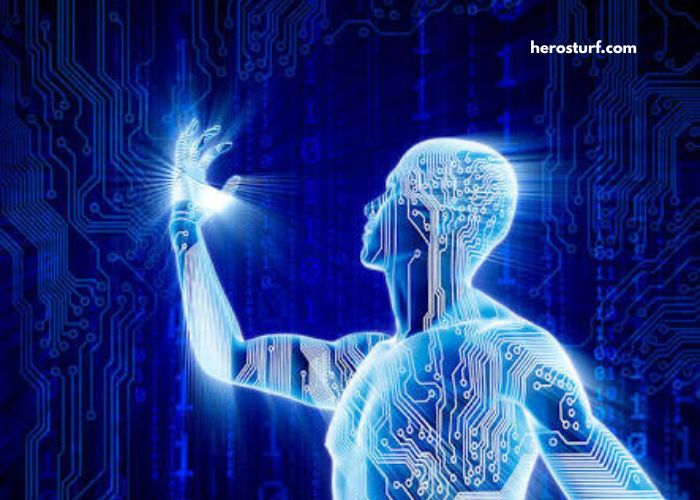Latest AI Technology Innovations Explained Simply

Artificial Intelligence (AI) has rapidly transformed numerous industries, revolutionizing the way businesses operate, enhance customer experiences, and even influence daily life. With new advancements in AI, it’s essential to stay updated with the latest innovations that are shaping the future. This article explores the most exciting and cutting-edge AI technologies, providing a simple yet comprehensive breakdown of how they work and their potential impact on various sectors.
1. What is Artificial Intelligence?
Before diving into the latest innovations, let’s first define AI. Artificial Intelligence refers to the simulation of human intelligence in machines programmed to think and act like humans. These systems can perform tasks such as learning, problem-solving, speech recognition, and decision-making. Over the years, AI has progressed from basic machine learning algorithms to sophisticated models capable of complex tasks.
2. AI in Healthcare: Revolutionizing Patient Care
AI has become a game-changer in the healthcare industry, enhancing patient outcomes and streamlining operations. One of the significant innovations is AI-powered diagnostic tools, which can analyze medical images, such as X-rays and MRIs, with accuracy comparable to that of experienced radiologists.
2.1 AI in Personalized Medicine
Personalized medicine is another exciting area where AI shines. By analyzing vast amounts of patient data, AI systems can recommend customized treatments, predict potential health risks, and optimize care plans tailored to individual needs. This leads to more effective treatments and faster recovery times.
2.2 Robotic Surgery
Robotic surgery, guided by AI, allows for greater precision and less invasive procedures. These robots assist surgeons in performing complex surgeries with higher accuracy and smaller incisions, reducing recovery time and improving patient safety.
3. Natural Language Processing (NLP): The Future of Communication
Natural Language Processing (NLP) is one of the fastest-growing branches of AI, enabling machines to understand, interpret, and generate human language. This innovation has led to significant improvements in virtual assistants, chatbots, and customer service automation.
3.1 Conversational AI
Conversational AI, which powers chatbots and virtual assistants, is constantly evolving. The latest NLP models, such as OpenAI’s GPT-4, can hold complex conversations, understand context, and provide human-like responses. This has opened up new possibilities in customer service, mental health support, and even content creation.
3.2 Language Translation
AI-driven language translation tools, such as Google Translate, have seen massive improvements in accuracy. These tools now use deep learning models to provide near-instant translations, breaking down language barriers and facilitating global communication.
4. AI in Autonomous Vehicles: Shaping the Future of Transportation
Autonomous vehicles are one of the most exciting applications of AI technology. These self-driving cars use AI to process vast amounts of data from sensors, cameras, and GPS to make real-time driving decisions without human intervention.
4.1 Self-Driving Cars
Companies like Tesla, Waymo, and others are pioneering self-driving technology. With AI-powered algorithms, autonomous vehicles can detect obstacles, predict traffic patterns, and navigate complex road conditions. Although fully autonomous cars are not yet widespread, they are steadily becoming a part of the future of transportation.
4.2 AI in Traffic Management
AI is also being used to improve traffic flow in cities. Intelligent traffic systems can optimize signal timings based on real-time traffic data, reducing congestion and improving overall urban mobility.
5. AI and Automation in Business: Boosting Productivity
AI-driven automation is revolutionizing how businesses operate, enabling them to streamline processes and reduce human error. From customer service to logistics, AI is automating various tasks traditionally done by humans.
5.1 AI in Customer Support
AI chatbots have become a staple in customer service. These bots use NLP to understand and respond to customer queries quickly. They can handle repetitive tasks like answering FAQs, tracking orders, and resolving simple issues, freeing up human agents to focus on more complex tasks.
5.2 Robotic Process Automation (RPA)
Robotic Process Automation (RPA) refers to the use of AI to automate repetitive tasks, such as data entry, invoicing, and payroll management. This innovation has enabled businesses to operate more efficiently by reducing manual work and increasing accuracy.
6. AI in Cybersecurity: Strengthening Digital Defenses
As cyber threats become more sophisticated, AI is playing a crucial role in strengthening cybersecurity defenses. Machine learning algorithms can detect anomalies in network traffic and identify potential security breaches before they happen.
6.1 AI-Driven Threat Detection
AI systems are used to monitor network activity in real time, analyzing data to spot unusual patterns that could indicate a cyberattack. This allows security teams to respond more quickly and proactively to threats, reducing the risk of breaches.
6.2 Fraud Prevention
AI is also enhancing fraud detection in sectors like finance and banking. By analyzing transaction patterns and detecting inconsistencies, AI can help prevent fraud in real time, protecting both businesses and consumers.
7. AI in Education: Personalized Learning at Scale
AI is transforming the education sector by providing personalized learning experiences for students. These technologies adapt to each student’s learning style, pace, and preferences, creating an individualized curriculum that enhances engagement and retention.
7.1 AI Tutoring Systems
AI-powered tutoring systems can help students with subjects ranging from math to science. These systems analyze student responses, identify areas of struggle, and provide tailored exercises and explanations, simulating the experience of one-on-one tutoring.
7.2 Smart Classrooms
Smart classrooms equipped with AI technologies enable teachers to provide real-time feedback to students, monitor progress, and tailor lesson plans to better meet the needs of individual learners.
8. AI in Finance: Enhancing Decision-Making
In the finance sector, AI is improving decision-making, risk management, and customer service. Machine learning models are used to analyze vast amounts of financial data, uncovering trends and insights that were previously hidden.
8.1 Algorithmic Trading
AI-driven algorithms are revolutionizing stock trading by analyzing market data at incredible speeds and making decisions based on patterns and trends. These algorithms can execute trades faster and more accurately than human traders, optimizing returns.
8.2 Credit Scoring and Loan Approval
AI is also transforming the lending industry by providing more accurate and equitable credit scoring. AI models analyze an individual’s financial behavior, transaction history, and other data to assess creditworthiness, improving loan approval processes.
9. AI in Manufacturing: Optimizing Production
Manufacturers are increasingly adopting AI technologies to streamline production lines, improve quality control, and predict maintenance needs. AI’s ability to process large amounts of data quickly is enabling smarter decision-making in manufacturing.
9.1 Predictive Maintenance
AI-powered predictive maintenance uses data from sensors on machines to predict when they will need maintenance or repairs. This proactive approach reduces downtime and extends the lifespan of expensive equipment.
9.2 AI in Supply Chain Management
AI is also being used to optimize supply chains by forecasting demand, optimizing inventory, and reducing waste. These innovations help companies respond more quickly to changes in the market and improve overall efficiency.
10. The Future of AI: Ethical Considerations and Challenges
While AI technologies continue to evolve at an impressive rate, they also raise ethical concerns. Issues such as data privacy, algorithmic bias, and job displacement need to be addressed as AI becomes more integrated into everyday life.
10.1 AI and Privacy Concerns
As AI systems rely on vast amounts of data, there is a growing concern about privacy. Striking the right balance between utilizing data for innovation and protecting personal information is crucial to the responsible use of AI.
10.2 Job Displacement
Another challenge is the potential impact of AI on jobs. While AI is automating many tasks, there is concern that it could lead to job losses in certain sectors. However, many experts believe that AI will create new opportunities for skilled workers in emerging fields.
Conclusion: Embracing the AI Revolution
The latest AI innovations are transforming industries across the globe, from healthcare and education to finance and manufacturing. While there are challenges to overcome, the potential of AI to improve lives and businesses is immense. As these technologies continue to evolve, they will open up new possibilities and shape the future in ways we can only begin to imagine. Embracing AI’s potential with responsibility and foresight will help ensure that it benefits every.


